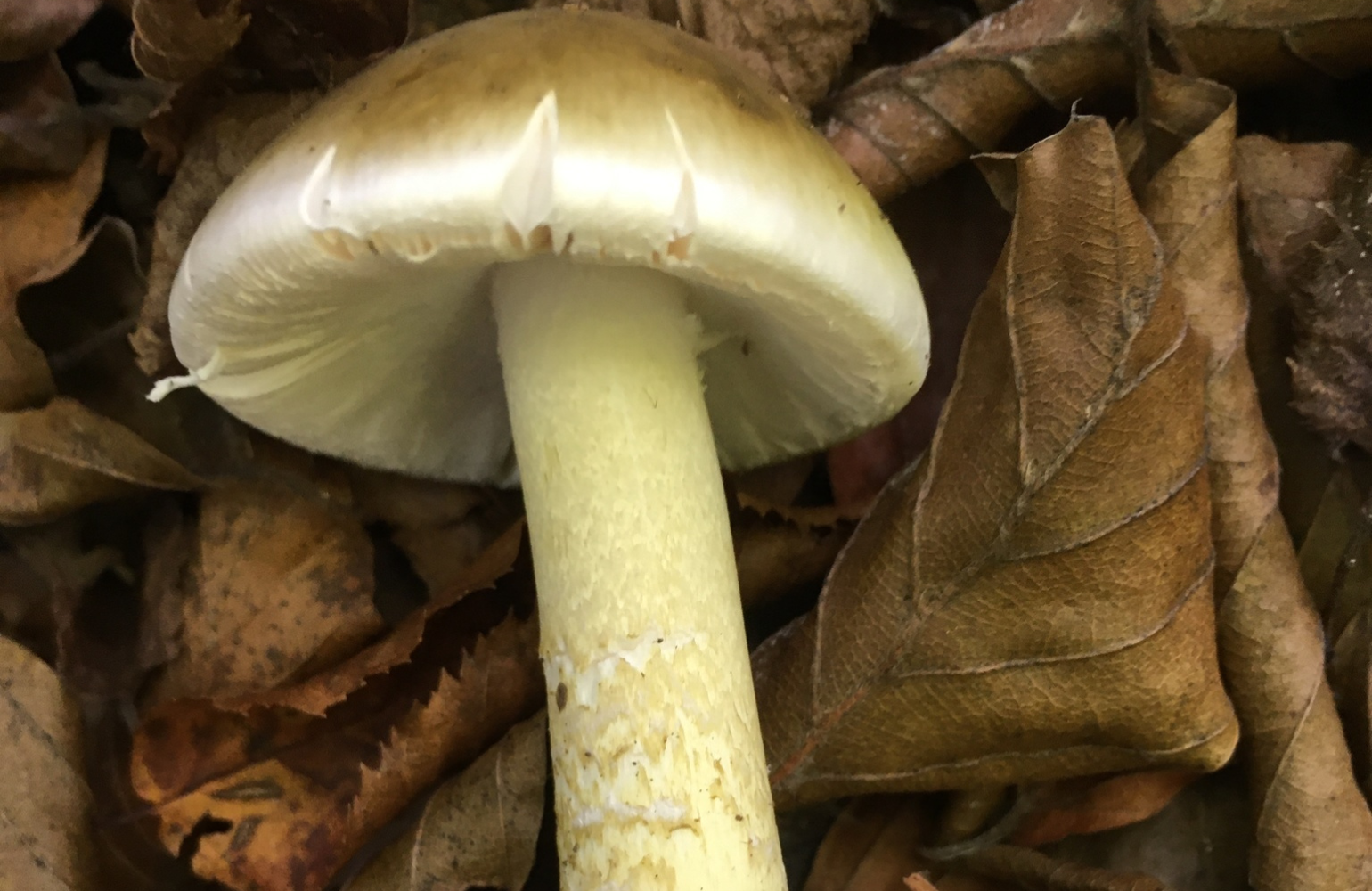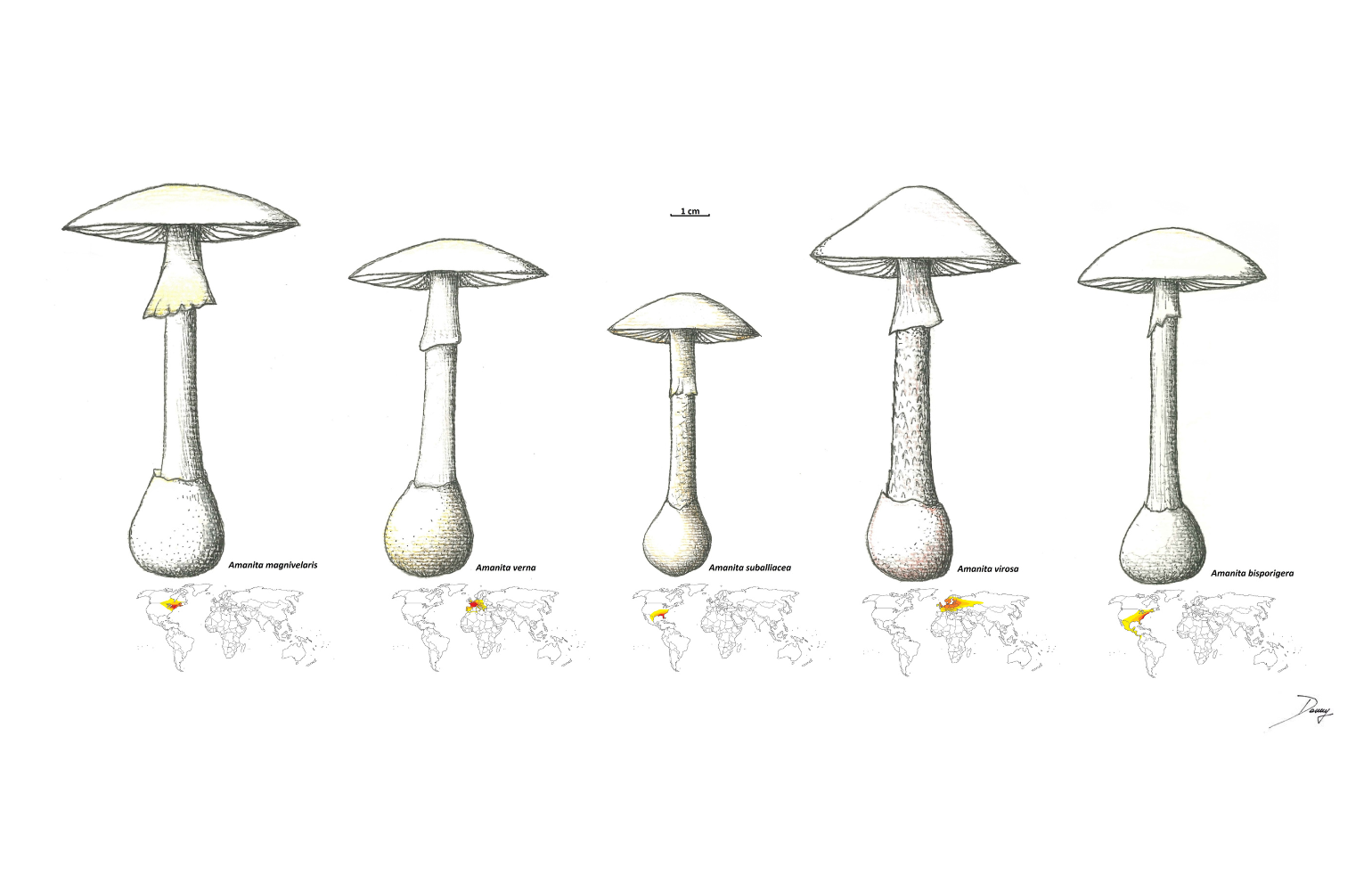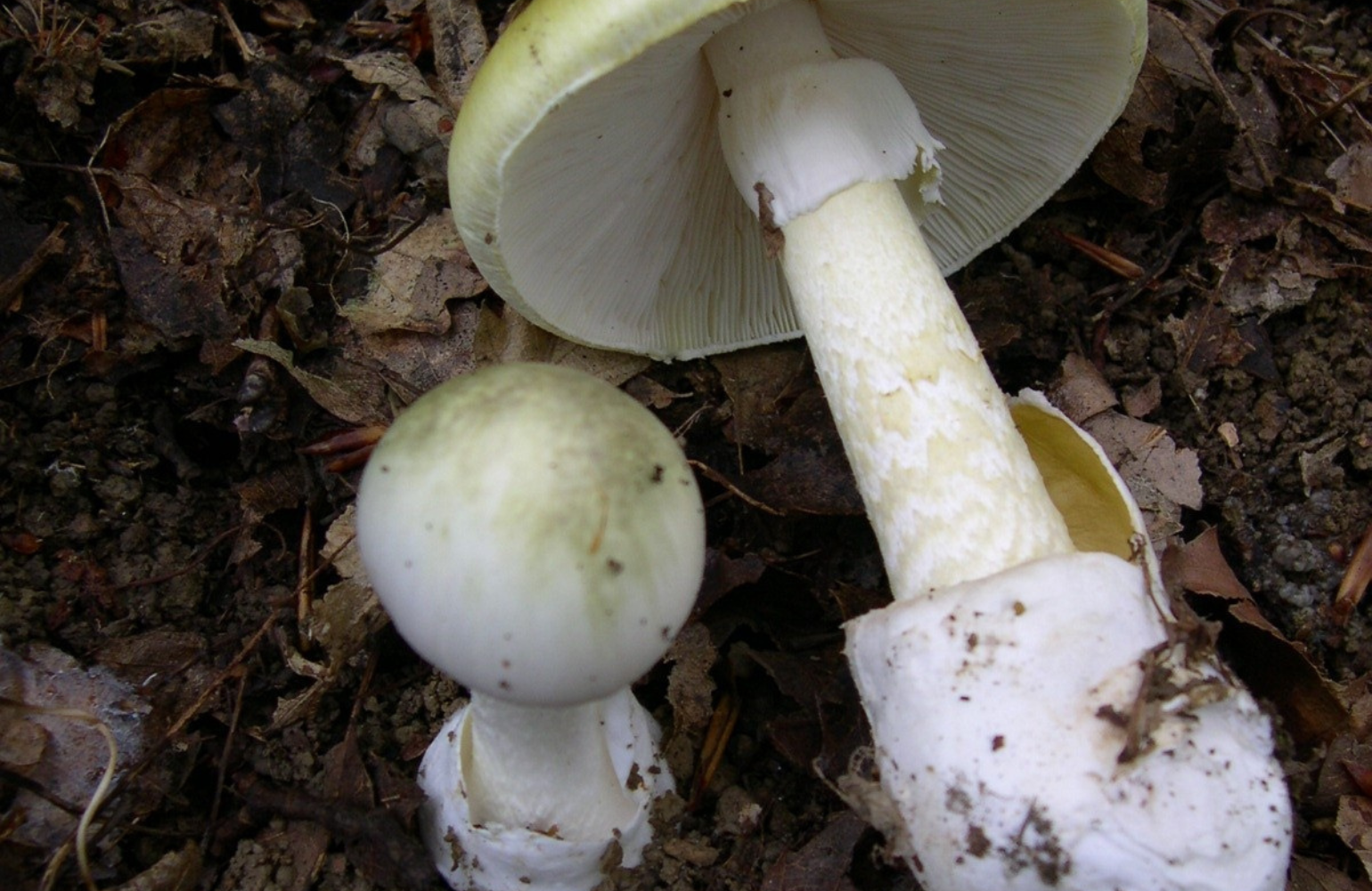The death cap and its cousin, the destroying angel, are names coined for two of the world’s most poisonous mushrooms — the Amanita Phalloides and the Amanita Ocreata. A serious concern for dog lovers and mushroom foragers, these mushrooms are prolific in Marin County, Northern California and beyond. The nonnative death cap is thought to have been brought to California’s Central Coast in the 1930s by Spaniards importing cork oaks for the early wine industry.

The spores of specific amanita mushrooms are symbiotic with live oaks, coastal oaks, tanoaks and pine trees. They thrive on tree roots, particularly those of the oaks in Marin. Most often they appear during the rainy season, but can grow year-round in irrigated gardens and damp, decaying matter such as mulch and compost. These mushrooms will sprout overnight and are capable of eluding even the most diligent eye. Because dogs are attracted to the fishy scent of these mushrooms, it is important to keep them on leash on wooded trails and check lawns and gardens regularly.

According to Kevin Sadlier, a mushroom expert and owner of Green Jeans Nursery in Mill Valley, “There is no way to get rid of the mushrooms. Learn to identify them and then physically remove them if you do find something. The other option is to periodically check underneath the soil in your gardens. The mushrooms look like small eggs before they mature and appear above ground releasing their attractant odor.” If your pet becomes sick for unknown reasons, don’t hesitate to take him or her straight to the vet and ask to check for signs of mushroom poisoning.

Robin Breuner is a freelance writer and an occasional contributor to Marin Magazine. Prior to the pandemic, she worked as an author host at Book Passage. She is currently at work on a memoir about navigating a home renovation through the ups and downs of Covid.

